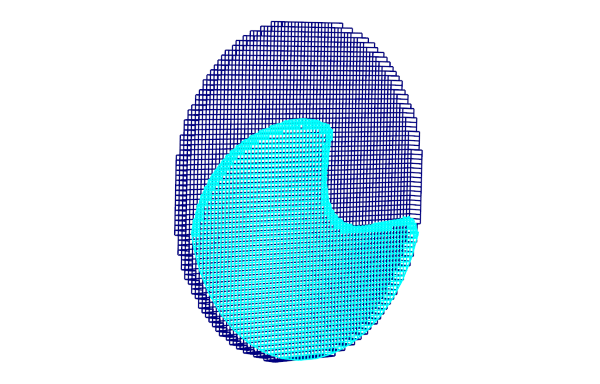Typical cases using 2D condition
At first glance it may seem that 2D calculation is disconnected from the laws of physics of 3d space, in which we and all the objects surrounding us exist. But that`s not actually true, because 2D calculation just disables the distribution of disturbancesalong one of the coordinate directions. It is, of course, a distortion of the full picture of results, however it`s more than acceptable for getting a quick estimation. For this reason, it is recommended that work on a complicated project should begin with a 2D calculation.
You can't even imagine how much you can make your life easier if you approach complex 3D problems by first modelling in a two-dimensional setting!
Moreover, practically any task can be simplified at the first stages and presented in 2D. There are many examples of various 2D modelling approaches in the FlowVision tutorials. However, should you encounter technical difficulties in simplifying your task to 2D, contact the FlowVision tech support team (support@flowvisioncfd.com), we would be happy to help! In the meantime, we will tell you three reasons why 2D calculation should be used in the modelling approach to any problem.
1. Solving verification problems
Verification has two goals:
- to evaluate the capabilities of a CFD program in solving a particular problem
- to find the best solver settings for your simulation
Verification data is usually based either on a real experiment (from which we get flow images and parameter values for certain points in space) or on a computational experiment (in which users just like you perform 2D calculations). Therefore, to save time and computational resources, the verification stage can be successfully completed on a "cheap" 2D project.
2. Performing grid and time convergence studies
Here we will talk about an extremely important stage of the calculation process (the credibility of future results depends on it!) and also the most resource-intensive. We have already written how to properly do a convergence investigation. But in the shorter way, to find out the right grid cell size and time step value you have to about 6-10 calculation in average. And much easier to do it in the 2d analogy of the real task. You will not only faster find the optimal grid and step (even taking into account that 1 - 2 calculations will holding with an excessively fine grid and step), but you will also be able to quickly assess the impact of local grid adaptation.
3. MODELLING EFFECTIVELY TWO-DIMENSIONAL PROCESSES
As an example, when modelling flow of a very viscous fluid, flow in the transverse direction is negligible due to high inertia of the viscous medium, and can be ignored. Another example is the modelling of cross-flow over heavily elongated bodies. At any cross-section along such bodies the flow will be the same, so we can avoid unnecessarily complicating the formulation and instead model just one cross-section in 2D.
